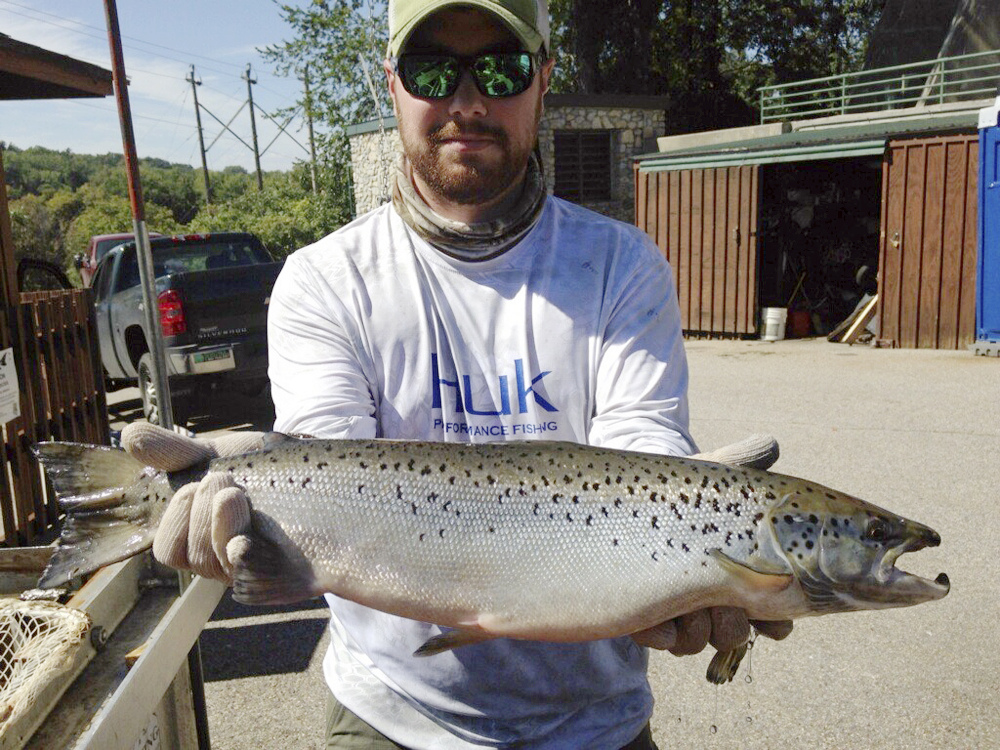WINOOSKI, Vt. — The summerlike weather at the end of September was keeping some of the landlocked Atlantic salmon in Lake Champlain from making the runs up the Winooski River to their traditional spawning grounds, a biologist says.
In the last week, no salmon had been found in the fish lift at the Winooski One hydro-electric plant at the waterfall between the cities of Burlington and Winooski, where they would be moved to a truck that would carry them to a spot in the river in North Williston, where they are released.
“Right now they are probably not thinking about coming up the river till things cool off a little bit,” said Nicholas Staats, a fish biologist with the U.S. Fish and Wildlife Service.
The fish lift run by Burlington Electric at the Winooski One hydro-electric plant between Burlington and Winooski opened Sept. 6. Before the recent summerlike weather, 24 fish had been moved, Staats said.
Over the last seven years, an average of 49 fish had crossed the dam by Sept. 29, from a low of 13 in 2012 and a high of 129 in 2011.
The number of fish carried above the dam varies by year. Last year, a total of 89 were moved. In 2014, 158 were moved. Since biologists began moving the salmon in 1993, the most to cross in a single season was 189 in 2011.
By the end of October and into November, the fish are expected to start spawning, using their tails to dig nests, or redds, in gravel banks near Richmond where the females lay the eggs and the males fertilize them.
Staats said he’s hopeful that when water and air temperatures return to normal, the fish will start swimming up the river again.
Biologists say the return of naturally reproducing salmon to the Winooski River in Vermont and the Boquet River in New York is a success story produced by a decades-long effort by the Fish and Wildlife Service and agencies in Vermont and New York.
Send questions/comments to the editors.


